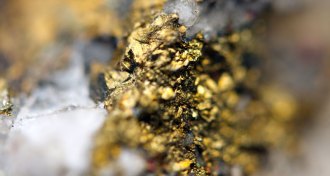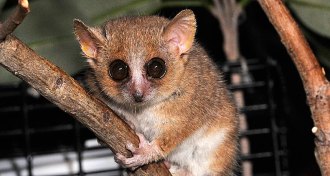All Stories
-
 Earth
EarthWhere the young hot Earth cached its gold
A simulation of the infant Earth provides a new view of how the iron-loving precious metals ended up buried deep in the planet’s core.
-
 Life
LifeFossils hint at India’s crucial role in primate evolution
Ancient fossils from coal mine in India offer clues to what the common ancestor of present-day primates might have looked like.
By Bruce Bower -
 Genetics
GeneticsGenetic surgery is closer to reality
A molecular scalpel called CRISPR/Cas9 has made gene editing possible.
-
 Planetary Science
Planetary ScienceOSIRIS-REx spacecraft launches tonight for mission to grab asteroid sample
NASA’s OSIRIS-REx spacecraft is about to launch for a seven-year mission to study the asteroid Bennu and bring samples of the space rock back to Earth.
-
 Astronomy
AstronomyProxima b deserves buzz, even if some didn’t notice
Editor in chief Eva Emerson discusses Earth's newest potentially habitable neighbor.
By Eva Emerson -
 Health & Medicine
Health & MedicineReaders contemplate aging research
Aging research, dino guts and Earth's quasisatellite in reader feedback.
-
 Oceans
OceansFish escapes from marine farms raise concerns about wildlife
Farmed salmon, sea bass and other fish frequently escape from sea cages into the ocean. Will these runaways harm native wildlife?
By Roberta Kwok -
 Paleontology
PaleontologyPreteen tetrapods identified by bone scans
Roughly 360 million years ago, young tetrapods may have schooled together during prolonged years as juveniles in the water.
By Susan Milius -
 Paleontology
PaleontologyJurassic ichthyosaur dubbed ‘Storr Lochs Monster’ unveiled
A rare, 170-year-old skeleton discovered in Scotland is one of the best-preserved ichthyosaur fossils from the Middle Jurassic.
By Meghan Rosen -
 Microbes
MicrobesMicrobial matter comes out of the dark
Undiscovered bacteria challenge what scientists know about microbial life.
By Laura Beil -
 Planetary Science
Planetary SciencePhilae lander spotted on comet 67P
Missing since November 2014, the Philae comet lander has been found lurking in the shadows on comet 67P/Churyumov-Gerasimenko.
-
 Planetary Science
Planetary ScienceRosetta spots Philae lander on surface of comet 67P
Missing since November 2014, the Philae comet lander has been found lurking in the shadows on comet 67P/Churyumov-Gerasimenko.